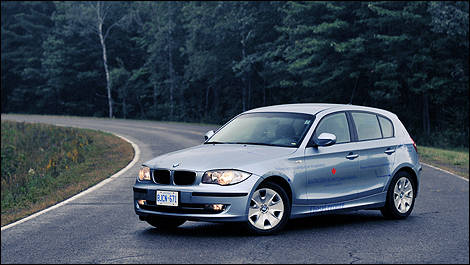While we’re spending millions in development on hybrid, electric and hydrogen-powered vehicles, one technology that’s scarcely distributed allows for instant fuel savings and doesn’t cost all that much to implement.
Those who drive hybrids already know what this system is all about. When arriving at a stop or a stoplight, the hybrid vehicle’s internal combustion engine turns off. When the brake pedal is released, however, the engine fires back up immediately and away you go.
The objective is simple: to save gas when you’re not moving.
Fuel savings aren’t extraordinary, but depending on how much stop-and-go driving you do, a 5% to 10% improvement in fuel economy is realistic.
Start/stop technology, also called Idle Stop, uses a belt-driven starter-generator that acts as a starter motor and alternator. Engine restarts are instantaneous, and more and more components on new vehicles are electrically-controlled, which reduces dependency on the engine. Electric-assist power steering is just one example. The battery keeps all electronics and accessories alive when the gas engine is shut off.
It’s not too complicated. And best of all, this system can be integrated to just about any car or truck. Overseas, Mazda offers it. BMW and MINI offer it. Audi offers it. Besides hybrids, the only manufacturer in North America that's offering start/stop is Porsche in their Panamera and Cayenne. Ford recently announced their 2012 vehicles would offer the system. So how come all the new vehicles for sale in North America aren’t equipped with start/stop?
Ah, but you might think start/stop technology would jack up the price of new vehicles substantially. If the system was mass-deployed it could add between $400 and $1,000 to the price of a car or truck, according to certain manufacturers, which isn’t all that terrible, is it?
According to Mazda, the main reason they’re not offering it in America is because the fuel economy city test cycles doesn’t allow the system to be fully exploited; there is no extended-period idling in the test, as if stoplights and traffic jams didn’t exist. As a result, the EPA and NRCan city ratings wouldn’t change. Would the consumer pay for a system that doesn’t improve the published fuel economy ratings?
They should. Anyone who’s been stuck in traffic (who hasn’t?) just has to look around to realize how many vehicles aren’t moving, but their engines are needlessly consuming fuel.
During a recent visit with Transport Canada to meet up with the team working on the eTV (ecoTECHNOLOGY for Vehicles) program, we got the opportunity to try out start/stop systems in non-hybrid vehicles.
Those who drive hybrids already know what this system is all about. When arriving at a stop or a stoplight, the hybrid vehicle’s internal combustion engine turns off. When the brake pedal is released, however, the engine fires back up immediately and away you go.
 |
| BMW 118d (Photo: Matthieu Lambert/Auto123.com) |
The objective is simple: to save gas when you’re not moving.
Fuel savings aren’t extraordinary, but depending on how much stop-and-go driving you do, a 5% to 10% improvement in fuel economy is realistic.
Start/stop technology, also called Idle Stop, uses a belt-driven starter-generator that acts as a starter motor and alternator. Engine restarts are instantaneous, and more and more components on new vehicles are electrically-controlled, which reduces dependency on the engine. Electric-assist power steering is just one example. The battery keeps all electronics and accessories alive when the gas engine is shut off.
It’s not too complicated. And best of all, this system can be integrated to just about any car or truck. Overseas, Mazda offers it. BMW and MINI offer it. Audi offers it. Besides hybrids, the only manufacturer in North America that's offering start/stop is Porsche in their Panamera and Cayenne. Ford recently announced their 2012 vehicles would offer the system. So how come all the new vehicles for sale in North America aren’t equipped with start/stop?
Ah, but you might think start/stop technology would jack up the price of new vehicles substantially. If the system was mass-deployed it could add between $400 and $1,000 to the price of a car or truck, according to certain manufacturers, which isn’t all that terrible, is it?
According to Mazda, the main reason they’re not offering it in America is because the fuel economy city test cycles doesn’t allow the system to be fully exploited; there is no extended-period idling in the test, as if stoplights and traffic jams didn’t exist. As a result, the EPA and NRCan city ratings wouldn’t change. Would the consumer pay for a system that doesn’t improve the published fuel economy ratings?
They should. Anyone who’s been stuck in traffic (who hasn’t?) just has to look around to realize how many vehicles aren’t moving, but their engines are needlessly consuming fuel.
During a recent visit with Transport Canada to meet up with the team working on the eTV (ecoTECHNOLOGY for Vehicles) program, we got the opportunity to try out start/stop systems in non-hybrid vehicles.
 |
| smart fortwo mhd (Photo: Matthieu Lambert/Auto123.com) |


